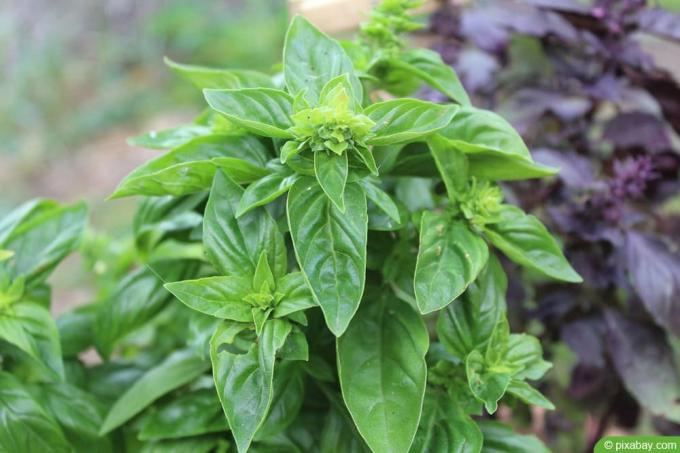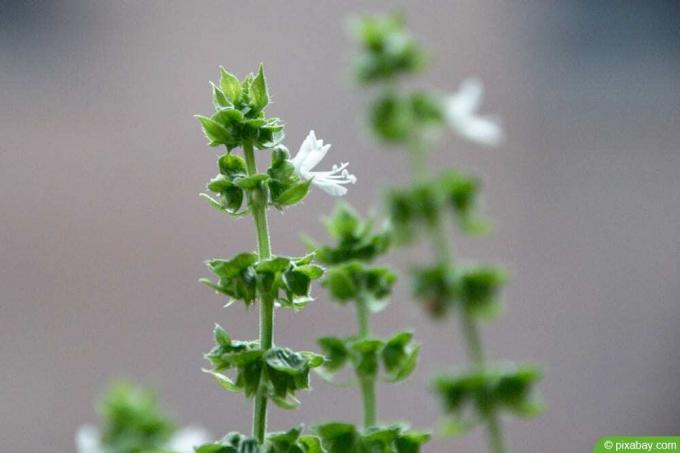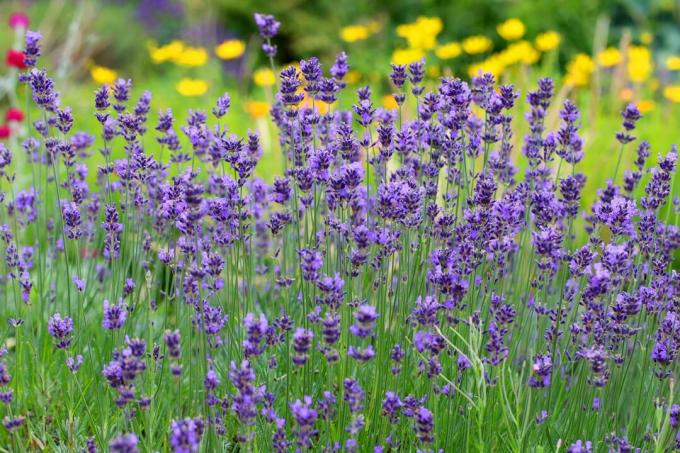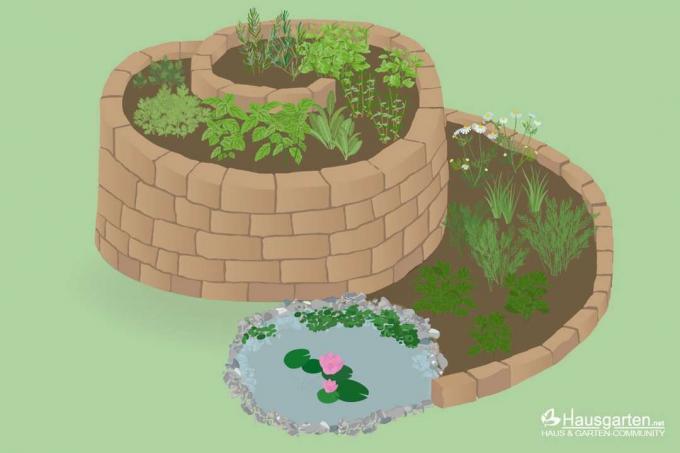

Table of contents
- Annual flowering period
- The aroma wears off
- prevent flowering
- Use flowers for culinary purposes
- Basil flowers as insect food
- collect seeds
Basil is one of our favorite herbs in the kitchen. As fresh and aromatic as possible. That is why this herb is often sown in the garden or kept in pots on the windowsill. At some point in the summer, new leaves will no longer sprout. All the energy then goes into the formation of flowers. This also affects the flavor of the leaves.
Annual flowering period
Depending on the variety, basil plants can be cultivated as annuals or perennials. In local latitudes, however, surviving the winter is only possible in frost-free rooms. In the spring, growth can pick up speed again. Every year the plant strives towards flowering. Ultimately, seed formation ensures the survival of the species.
- around July it's time
- the first flower buds sprout
- each at the tips of the stems
- this uses up all the power reserves of the plant
- it therefore no longer forms new leaves
But even if the herb is only blooming now, there are still enough green leaves on the shoots. Are they still an asset to our dishes? Or is it over with the first blossom with the harvest?
The aroma wears off
If you harvest the green leaves of basil during or after flowering, you will notice a noticeable change in flavor. They are no longer loaded with aromatic substances as intensively as we are used to from them. That can be disappointing. There is also a bitter taste. However, the leaves are by no means harmful or even poisonous, as is sometimes claimed. They remain edible.
- Aroma intensity decreases
- nevertheless, the typical taste is still noticeable
- in addition, more bitter substances unfold
- Leaves are therefore less suitable for raw consumption
- however, they lose their bitterness when cooked

Flavor loss is inevitable as all of the plant's energy is focused on bud formation. Meanwhile, aroma formation is neglected.
prevent flowering
It's not impossible to keep the typical flavor of the leaves beyond July. But for this it is not enough to cut off the already flowering tops. Even flowering must be consistently prevented. However, most cooks pluck individual leaves from the stalks as needed. This procedure is not recommended. Sooner or later the flower buds will appear on the remaining shoot tips. If too many leaves are plucked from the stalks, they even have too little strength to continue living and they die completely. It makes much more sense to harvest the herb as follows:
- prevent flowering by removing the tip
- therefore cut whole shoots
- the cut piece should be min. be 5 cm long
- however, leave a remainder with at least one pair of leaves
- Basil will sprout from the leaf axils
- this style of harvesting encourages a bushy form
- the harvest is increased
- the harvest time is extended until frost
Tip:
If the basil develops so well that you cannot use up all the shoots in a timely manner, you should still harvest them before they bloom. You don't have to throw away what you cut off. This herb freezes well.
Use flowers for culinary purposes
When the basil blooms, the small flowers do not necessarily and exclusively have to be regarded as a disruptive factor. They are edible. That's why something tasty can be conjured up from them. Dried basil flowers make a delicious tea.
Basil Vinegar Recipe:
- harvest about a handful of flowers
- additionally pick about 12-15 leaves
- pour into 200 ml white wine vinegar
- let it steep in it for a month
- then strain and discard the basil pieces
- the vinegar can be used for salad dressings
- or to season other dishes
Basil flowers as insect food

With a basil that is already in full bloom, the aroma loss of the leaves can no longer be stopped. The flowers are no longer worth cutting unless they are used in the kitchen. Otherwise, just leave them alone. Blossoming basil in the garden is an insect magnet and is to be welcomed for that reason alone. If you have sown several specimens in the spring, you can use double glazing without sacrificing the harvest. While on some plants you stop all the beginnings of flowering, other specimens are allowed to keep their white or, depending on the species, different colored flowers and thus serve as food for bees and co.
Tip:
However, if you do not want to sow yourself, you must cut off the faded remains of the flowers in good time before the seeds form.
collect seeds
Basil does not survive local winters if left outside in the bed. That is why it is sown anew every year or bought as a young seedling. But neither seeds nor young plants have to be bought commercially for money. If you let a few sprouts grow without topping them, mature seeds will develop from the buds that follow.
- Cut the dry inflorescences first
- grate over a bowl
- Sieve seeds, remove plant remains
- store in a dark, cool and dry place until spring
From the seeds obtained in this way, you can gain new plants free of charge in the spring. However, you can also forgo the seed harvest and hope for self-sowing instead. Most of the time it will happen.
 Home editorial office
Home editorial office
Learn more about growing herbs

Basil has black dots: what to do?
Especially basil bought in a pot from the supermarket tends to quickly develop black dots or spots on the leaves. This article explains why this is and what helps against it.

14 kitchen herbs that you can really keep in the kitchen
Sometimes a herb garden is only possible on the windowsill. If you don't have your own garden bed, for example, or in the months when the frost freezes the coveted greenery outside. Our list provides an overview of which herbs like the kitchen location permanently.

Parsley turns yellow: Four tips against yellow leaves
If the leaves of the parsley suddenly turn yellow, the so-called parsley disease is usually behind it. This can have many causes. If the outbreak of the disease is to be prevented, only prevention helps. More about this here.

You can combine lavender with these 13 plants
Whether you use it in the kitchen, want to enjoy its fragrance or its beauty, lavender is a must in any garden. Well combined, it can strengthen other plants or protect them from pests. We present the best plant neighbors.

8 tips for cutting and harvesting herbs properly
Fresh herbs from the garden should not be missing in any kitchen. They are versatile, exude pleasant and spicy scents and are a treat for the eye with their pretty flowers. In the kitchen, they can easily replace artificial flavor enhancers.

Herb spiral & herb snail: this is how it's done
A herb spiral or herb snail makes it possible to plant many different varieties in a particularly decorative way. However, this is not the only advantage of these variants of the culture. You can find out how to create them here.



